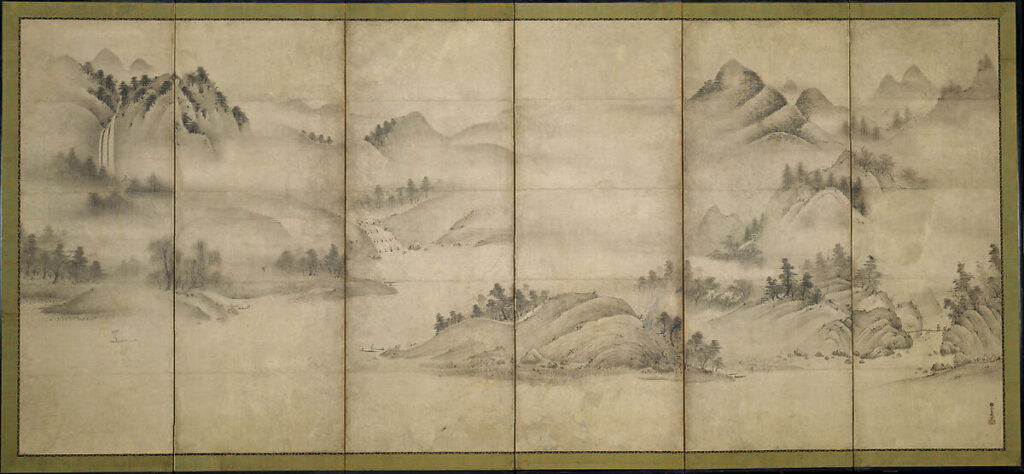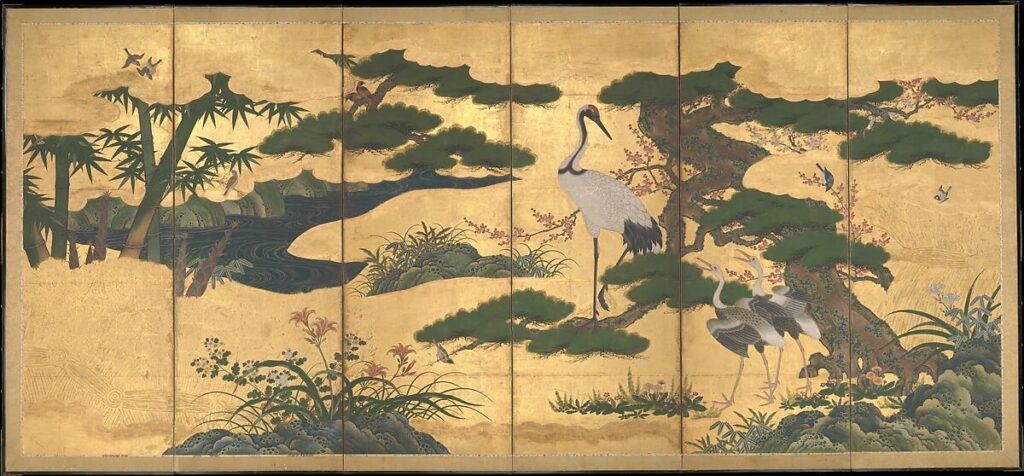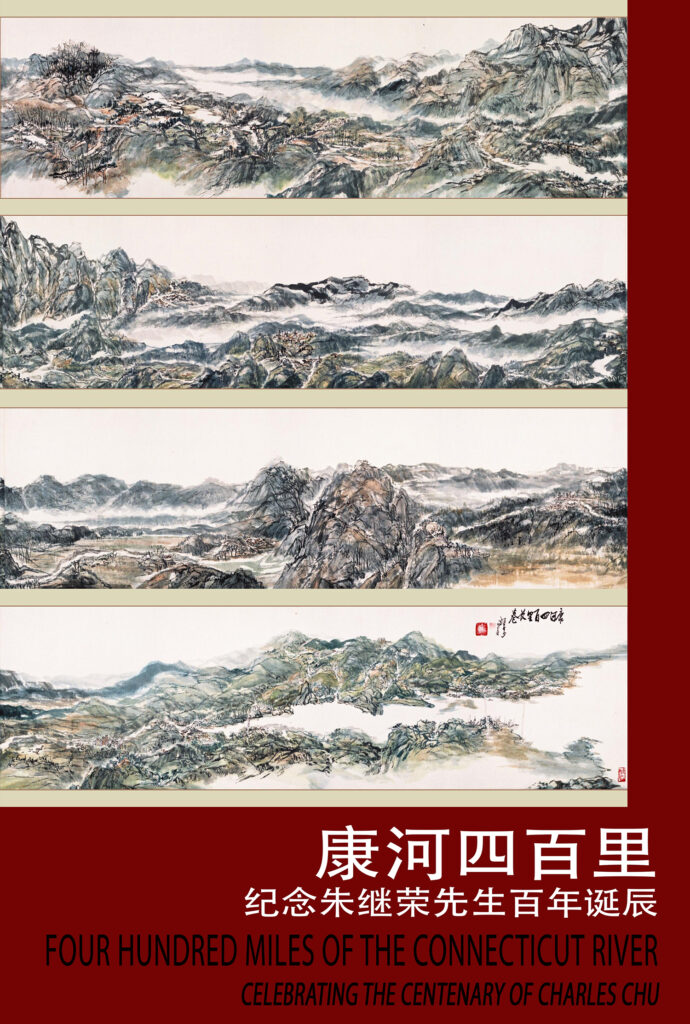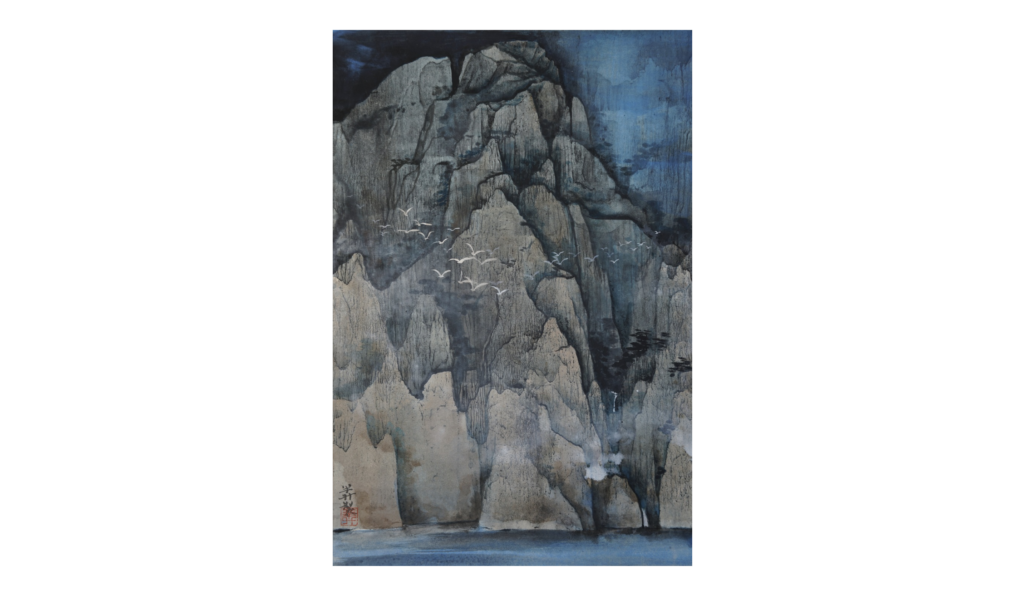Rowan McGrath
The Goal of My Chapter
This chapter aims to explore further and find the unique beauty of Chinese/Japanese Landscape Art. This style of art was the catalyst for my newly-found love for art. I had never taken any art classes but when I saw the chance to take one I went for it. I did not know what to expect but there was no way that I wouldn’t dislike it. My primary interest was Japanese art but my first class was Chinese Arts in America. It was one of the greatest experiences I have ever had. Professor Huang of Conn College helped me find this with just his teaching. I was entranced by all the artwork that was and has been shown through both my classes at Conn College. Landscape art has impacted history greatly through time. With the start of it being the Chinese Han Dynasty(206 B.C.E – 220 C.E). In the beginning it was used as a narration for poems, as well as entire stories. The way it could tell stories is through a series of paintings that will noticeably have a storyline. It’s a ceaselessly fascinating storytelling method that I hope to be more involved with in the future. I am so grateful for being allowed to take these classes and explore my interests further.
Why these Images?
The reason I chose these specific images was because I believe that they all help define what Asian Art is in my mind. They all show one of the many different variations of landscape art. Some show minimal brush strokes that show so much detail. One shows color, animals, and a lot of negative space and still tells so much. This subject of art is so broad with its limits and leaves plenty of room for creativity with many artists. Through this essay you will see few of the variations of this fascinating art style. All of these paintings share similarities through subjects, or negative space and there are also so many differences with their size, painting style, colors, and everything. Nothing can be the exact same but it is not always different from the rest.
Landscape of the Four Seasons
“The Landscape of the Four Seasons” is a fascinating landscape painting that was put onto a six-panel folding screen. It uses ink on paper and depicts a mountainous valley with large amounts of negative space that can be assumed to be water and clouds. The negative space within this painting is one of my favorite things because even when there is nothing there our eyes can still fill that space with those clouds and water. It’s such a satisfying technique for landscape paintings such as this one. The size of these paintings make the interest in the painting so much greater. The amount of detail put into a singular painting of that size is incredible. The smoothness of the mountain tops and every natural formation in this piece is so serene and composed. With this piece there are no aggressive brush strokes and sharp lines but rather softness and calm.

68 1/4 in. × 12 ft. 2 in. Ink on paper
https://www.metmuseum.org/art/collection/search/42344
Evening Snow at Kanbara
The painting shown is Evening Snow at Kanbara painted by Utagawa Hiroshige. This painting depicts a small village with people up front and shows amazing depth with the mountains, buildings, and trees. . The colors chosen in this landscape help greatly define the subjects of this image. The white snow greatly helps define the other darker colors such as the town, and the few people walking around. It also helps create lovely outlines of trees, and mountains which is my favorite piece of the painting. This was a quote I loved under the description of the painting on the Met museum site: “Mountains create a quiet that is broken only by the implied crunch of travelers’ footsteps in the snow”. I think everyone can imagine this in their minds and how peaceful it can be to walk in the snow and hear the crunch of it underneath your feet. This quote can help someone imagine the actions going on in this painting.

8 7/8 x 13 3/4 in. Ink and paper
https://www.metmuseum.org/art/collection/search/56915
Birds and Flowers of the Four Seasons
Birds and Flowers of the Four Seasons is another painting that is on a six-panel folding screen. This painting shows three cranes in a sort of marsh-like area. This beautiful painting is very favorable towards the small plants and the cranes as they are very detailed and truly make this painting mesmerizing. The painting was created through many different colors, ink outlines that make the painting pop, and a gold leaf background that makes the landscape shine. This painting uses an interesting take on the negative space. Instead of using it for water and clouds it was used for the land that the cranes stand on. There is a stream of water that is very well painted and it is shaped by the negative land space that can be noticed around the painting. At first glance it may seem different but the longer you look the more it all makes sense.

69 3/8 in. × 12 ft. 4 1/2 in.ink, color, gold, and gold leaf on paper
https://www.metmuseum.org/art/collection/search/44523
400 Miles of the Connecticut River
“400 Miles of the Connecticut River” is an incredible 23-foot-long handscroll made by Charles Chu, a contemporary artist born in Beijing who was a Professor here at Conn. Charles Chu was able to paint this at an amazing age of seventy-one. This is my favorite painting that I have seen and studied during my time at Conn. For my previous class here, I chose it for an Exhibition project in Professor Huang’s class Chinese Arts in America and it is currently in Shain Libraries Chu Room with my label which I believe some of you saw. The beauty of this painting never fails to captivate me because I live right next to this river and I feel like I was able to see where I lived from the painting which made me far more engaged with it. Due to its size, every time that you lay your eyes on this painting there is always something new. Even when it’s in the biggest case available in the Chu Room at Connecticut College you can still only see a small fraction of the piece. Every time I think of art I think of this painting because when I first learned of it I was in disbelief from its size. It displays such gorgeous mountains, the river, bridges, towns, and so much more.

Ca. 1990
23 feet long
Chu Griffis Asian Art Collection at Conn College
Ink of multiple colors on a handscroll
Going Home
“Going Home” by Wang Mansheng Is a beautifully painted art piece and it is very unique. This landscape has a single mountain that skyrockets into the sky and we have a view from the water below. It shows shadows from the cliffs and in a sense it’s somewhat eerie because of the color choices. It is also very detailed and that’s shown by the trees and waterfalls among the mountains. This painting is an incredible example of landscape painting. This is because the mountain holds so much detail with the angle the artist gave us. It could have been a wall going right up into the sky but we were given so much more. The birds shown can be comparable to the mountain’s size with the way they fly away from the mountain and grow in size.

Ink and Color on Cardboard
12 1/2 × 8 1/2 in | 31.8 × 21.6 cm
https://www.artsy.net/artwork/wang-mansheng-wang-man-cheng-going-home
Japanese Significance
Japanese landscape painting has a significant religious setting, especially in its historical origins. The evolution of Japanese landscape painting was greatly influenced by Japanese Buddhism, which was brought to Japan from China in the Sixth Century. Buddhist priests were some of the most renowned painters of Japanese landscapes in the early centuries. They produced artwork to decorate temple walls and serve as illustrations for sacred texts. Mountains, waterfalls, and other natural settings that were thought to be inhabited by gods and spirits were frequently depicted in early landscape paintings. Overall, the religious background of Japanese landscape painting is strongly influenced by Buddhism and portrays the strong spiritual bond that the Japanese people have with nature and the natural world.
Chinese Significance
Chinese landscape painting is one of the oldest and most important art forms in Chinese culture. It has a history of over 1,000 years, and its themes are deeply rooted in Chinese culture and philosophy. Chinese landscape painting often emphasizes the relationship between humans and nature, and it typically features mountains, rivers, and other natural scenery. The paintings are often highly detailed, with intricate brushwork and delicate coloring. Other times they can be very simplistic with minimal brush strokes yet still plenty of detail. Japanese landscape painting, on the other hand, has a shorter history but is equally as important in Japanese culture. Japanese landscape painting often emphasizes the beauty and tranquility of nature and shows off a range of natural scenes, including mountains, waterfalls, villages, and gardens. Japanese landscape paintings often use a minimalist style, with simple lines and a limited color palette to show a sense of peacefulness.
What is Asian Art?
Both Chinese and Japanese landscape painting utilizes a range of traditional techniques, such as brushwork, ink, and silk or paper. Both art forms often feature calligraphy, with poems or other written works included in the paintings. These culture’s landscape paintings are important as well as influential art forms in East Asian culture. They show the beauty and importance of nature, architecture, certain lifestyles, and both have developed unique and distinct styles over time. Asian Art is such a broad topic but to me Asian Art is the beauty of landscapes and every aspect of the paintings above. Asian Art is the small brush strokes and calligraphy that creates mountains, rivers, trees, and architecture. Through my short time in Asian Art I still can’t fully answer this question but I will further my interest in Asian Art until I can find it fully. I was given an amazing opportunity of being allowed to take these classes while in high school so I will take advantage of what I have learned and take it even further.
Bibliography
- https://www.metmuseum.org/toah/hd/seim/hd_seim.htm
- http://arthistoryresources.net/ARTHeastasia.html#japan
- Duke University
- https://www.metmuseum.org/art/collection/search/56915
- https://www.metmuseum.org/art/collection/search/44523
- https://www.metmuseum.org/art/collection/search/56915
- https://www.metmuseum.org/art/collection/search/42344
- https://www.artsy.net/artwork/wang-mansheng-wang-man-cheng-going-home